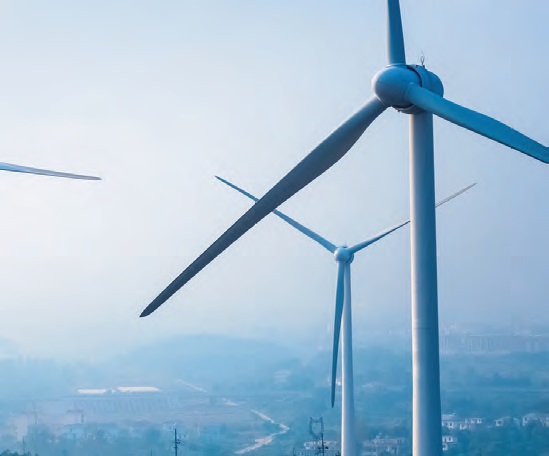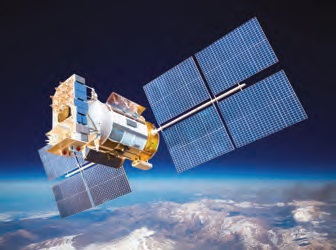Executive Summary
TLT readers cited electric vehicles and the electrification of machinery in general as the key forces that will drive base oil research and development through 2040. More attention will be paid to e-fluids and electrical conductivity properties, and lubricants also will face the higher operating speeds that often accompany electric machinery. Many survey respondents expect future lubricants to do a better job of combining low viscosity and low-temperature properties. As green technology evolves, biobased oils are assured of continuing their rapid growth. Many readers said end-users are looking for oils to handle heavier loads with extended drain intervals. With advances occurring almost too quickly to chart on several technical fronts, many survey respondents stress the importance of acquiring (and providing) accurate and reliable technical information. “More needs to be done to separate fact from opinion,” said one.
Q.1. How will research and tribology science on base fluids evolve during the next 20 years?
Reduction in oil capacity for combustion automotive vehicle with addition of oil-cooling system.
Synthetic or biobased esters will combine low viscosity and good low temperature. Low volatility still needed.
Research into transient modes, especially the effect of many factors at the same time on fluid properties, multiphase flows and microflows of such fluids, and flow under high vacuum.
Demand for Group III base oil will increase, and more innovated products of synthetic ester will emerge as a base oil.
Fewer petroleum-based fluids. Lighter-weight, stronger construction materials (e.g., composites).
More biobased lubricant oils.
Conversion of waste materials such as plastics to lubricant raw materials. Evolution of technologies like GTL to produce wider range of viscosities.
Movement away from petroleum. Continued movement toward synthetics.
The refining/re-refining processes should continue to evolve with changes in machinery engineering. Base oil classifications will be a developing topic as well as qualifying tests.
An exponential increase of Groups IV and V base stock use.
Increased insights due to wider adoption of data gathering in industrial application. This will enable better understanding of lubricant quality over time.
There will be a shift from conventional oils (fossil formed) to more products being developed using biobased lubricants, GTL technology and synthetic sources.
Biggest changes: electrically conductive and lower viscosity while maintaining a good film under high speeds and loads. Crucial for EVs.
Research will continue to design new chemically synthesized base stock molecules tailored to meet the conflicting demands of lower viscosity, lower Noack, better oxidative stability, longer life, reduced wear and lower friction. Smarter users will drive the change. Being wise enough to differentiate “lowest common denominator” specifications (lowest initial cost) from “step-out” lubricants (lowest total overall cost) will be key.
Base stocks will be tasked to provide protection at increasing lower viscosities along with longer oil drain intervals.
I think we’ll see more effective and accurate analysis and more realistic integration to real-world problems.
More synthetic base stocks and associated fluids will be needed for new powertrain technologies. Move toward e-fluids to meet electrification needs.
Developments with synthetic biology could totally disrupt what we are doing now.
High oleic vegetable oils for biobased base fluids.
I am a retired petrochemical chemist. My impression is the performance requirements for base fluids and metalworking fluids are constantly expanding and increasing. I anticipate the situation will eventually plateau if it hasn’t already. To surge ahead, the only route will be with significant improvements in additives. Crude oil is either paraffinic or naphthenic. Distillation is a simple process. Mobil One is an alkylated naphthalene and is, therefore, synthetic.
Lubricants will be greatly improved over the next several years. It is very possible that new lubricants will be developed, maybe some new Group IV oils.
Need for Group III+ and Group IV and V fluids would increase substantially to meet the demands of thinner SAE grades.
New fuels demanding new lubricants and impact to lubrication regimes.
There will be more use of biobased lubricants.
I think with the new synthetic-type base stocks, there will be many changes in the industry moving forward. Biggest challenges are costs and educating end-users to make these changes and extending life of equipment and change intervals.
More needs to be done to separate fact from opinion. OEMs need to focus on making machines, not selling only proprietary lubricants.
Increase in fluids that accommodate specific applications. Electrification is happening at a rapid pace, requiring fluids that enable operation of various components of the electrified vehicles without compromising friction, wear and current attributes.
More LCA and total cost of ownership focus.
I’m hoping for a bit more research on the “minor” differences that make a significant difference in the field, e.g., residual monomer, residual catalyst, purity of feedstock, variation in molecular weight, etc.
 Which base fluids will show the most growth in new products during the next 20 years?
Which base fluids will show the most growth in new products during the next 20 years?
Group III base oil
39%
Polyalphaolefins
39%
Synthetic esters
52%
Oil soluble polyalkylene glycols
21%
Gas-to-liquids technology
21%
Biobased lubricants
48%
Based on responses sent to 15,000 TLT readers. Total exceeds 100% because respondents were allowed to choose more than one answer.
 Q.2. Can you envision any future technology needs that will require changes in the preferred types of base fluids used?
Q.2. Can you envision any future technology needs that will require changes in the preferred types of base fluids used?
Smaller, higher-power-density equipment will require greater thermal stability.
Operation under high/low temperature and pressure, operation under high vacuum.
Need low-viscosity base oil for EV systems with multifunctional properties: good corrosion inhibition for copper, cooling effect, compatibility with composite materials, good conductivity and good lubricity.
As the market moves to a cleaner and greener energy source for vehicles, along with industrial products (like tar for roads and roofing), refineries will start to see a slowdown, with some being shut down, reducing the supply of Group I and II oils and driving up prices. This necessitates the need for more synthetics and biobased fluids.
More environmentally friendly lubricants if the Neanderthals evolve.
Electric vehicle driveline fluids need to balance wear/EP and copper corrosion with good electrical and thermal properties.
New engines based in IMO 2020 will need new technology for their oils.
Increased adoption of forced induction to increase efficiency brings a host of challenges.
Higher rpms in new technology need to be accommodated.
The continuing drive toward energy-efficient, higher energy-density power plants will require new fluids that have a combination of lower viscosity, high oxidative stability, low volatility and reduced wear and friction. The eventual transition to electrically powered vehicles will add in the additional requirements of non-corrosion, non-conducting and efficient heat-transfer. These increased requirements will drive the transition toward chemically synthesized and structured base stocks.
Lower viscosity oils for fuel economy in the automotive and heavy-duty engine platforms.
I suspect that the research into wind turbine bearing and gear reliability will result in further development of lubricants that are currently obscure.
More technology needs pertaining to compatibility with electrification equipment’s (e-motors, drives, etc.). Copper compatibility. Thermal compatibility, too.
Pyrolysis/new technologies of waste plastics base into constitute petroleum components.
Outer space applications will require solid film lubricants. Hence, molybdenum disulfide is probably the default lubricant additive.
Equipment in the future will be running at higher speeds and under more demanding loads, which will require wear protection that only full synthetics lubricants can provide. The use of mineral oils will decrease.
Need for fluids having very low volatility and much higher VI ranging between 150-200.
Yes, through analytical breakthroughs.
More gaseous fuels.
Training of maintenance and engineers personnel so that lubrication can be better understood. Lubrication is the most misunderstood issue in the manufacturing world.
Yes, higher pressures and speeds for the equipment and smaller footprints driving the temperatures up in the operations.
Lubricant and fluid conditioning will make most applications fill for life.
Higher temperatures, chemical resistance, material compatibility.
The ever-increasing paraffinicity of base oils will require solvency correction in the form of naphthenics and esters.
Longer service life and/or more demanding operating cycles (e.g., higher temperature, higher speed). Increased efficiency.
 What lubrication and tribology needs will require the most focused research as base fluids evolve during the next 20 years?
What lubrication and tribology needs will require the most focused research as base fluids evolve during the next 20 years?
Friction properties
55%
Wear control
55%
Oxidation control and deposit reduction
68%
Corrosion and rust protection
34%
Based on responses sent to 15,000 TLT readers. Total exceeds 100% because respondents were allowed to choose more than one answer.